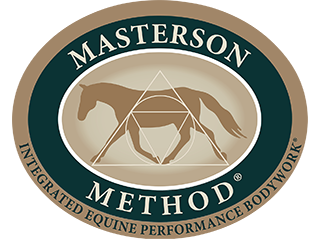Quiz-summary
0 of 24 questions completed
Questions:
- 1
- 2
- 3
- 4
- 5
- 6
- 7
- 8
- 9
- 10
- 11
- 12
- 13
- 14
- 15
- 16
- 17
- 18
- 19
- 20
- 21
- 22
- 23
- 24
Information
We are excited that you are coming to an Advanced 5-Day Course. To prepare for your upcoming course, please complete both the Horsemanship and Anatomy quizzes below to secure your place at the Advanced 5-day Course of your choice.
It is necessary for all students to read the Beyond Horse Massage book, view the Beyond Horse Massage DVD prior to attending the Advanced 5-day Course, and to pass both Horsemanship and Anatomy quizzes below with a score of 90%.
You must have enough experience with horses that you are able to safely and comfortably perform the techniques taught in the course. This is a simple quiz to test basic knowledge of the horse.
To begin the quiz, please filling the information below and click the “Start Quiz” button. Students taking this quiz do not need to login.
|
You must specify a text. |
|
|
You must specify an email address. |
|
|
You must specify a text. |
You have already completed the quiz before. Hence you can not start it again.
Quiz is loading...
You must sign in or sign up to start the quiz.
You have to finish following quiz, to start this quiz:
Results
0 of 24 questions answered correctly
Time has elapsed
Categories
- Horsemanship 0%
-
Congratulations on completing the Horsemanship Quiz.
We will email you confirming your quiz results.
- 1
- 2
- 3
- 4
- 5
- 6
- 7
- 8
- 9
- 10
- 11
- 12
- 13
- 14
- 15
- 16
- 17
- 18
- 19
- 20
- 21
- 22
- 23
- 24
- Answered
- Review
-
Question 1 of 24
1. Question
A horse that has a partial lameness in a front leg will:
-
Question 2 of 24
2. Question
A horse that has sudden difficulty and discomfort walking could be:
-
Question 3 of 24
3. Question
A calcified splint is a bony enlargement along the:
-
Question 4 of 24
4. Question
A vertical crack on the side of the hoof is called:
-
Question 5 of 24
5. Question
Which of the following is not a symptom of colic in the horse
-
Question 6 of 24
6. Question
What is the name for a common tendon in the lower limbs of the horse?
-
Question 7 of 24
7. Question
These critters lay their eggs in a horse’s coat and when the horse licks or bites the area, the eggs are transferred to the mouth, and from there, to the intestines where the larvae grow and attach themselves to the stomach’s lining or pass into the small intestine:
-
Question 8 of 24
8. Question
A healthy horse’s gums should be pink in color.
-
Question 9 of 24
9. Question
A hoof that has a wet, grayish or black discharge and foul odor means the frog has:
-
Question 10 of 24
10. Question
A horse that hooks his teeth onto something solid such as a fence or the door of his stall and pulls is:
-
Question 11 of 24
11. Question
When a horse rolls onto her side or back with her legs wedged against the wall in such a way that she cannot easily get up:
-
Question 12 of 24
12. Question
A horse’s temperature is checked:
-
Question 13 of 24
13. Question
On what limb is the horse’s stifle located:
-
Question 14 of 24
14. Question
Ringbone is a disorder localized to the:
-
Question 15 of 24
15. Question
The callous on the inside of the front leg of the horse, just at the vicinity of the knee is called a chestnut.
-
Question 16 of 24
16. Question
A thickening of the back surface of the leg immediately above the fetlock typically from torn fibers is called:
-
Question 17 of 24
17. Question
Which gait of the horse is a 2-beat diagonal gait?
-
Question 18 of 24
18. Question
General name for abdominal pain in the horse
-
Question 19 of 24
19. Question
When tracking to the right at the canter or lope, the horse is said to be on the correct “lead” when the right foreleg moves further forward than the left.
-
Question 20 of 24
20. Question
On what limb is the horse’s hock located:
-
Question 21 of 24
21. Question
Horses are measured in:
-
Question 22 of 24
22. Question
Which of these pieces of equipment is used to hold the saddle in place:
-
Question 23 of 24
23. Question
Laminitis will cause a horse to be:
-
Question 24 of 24
24. Question
A gelding is:
